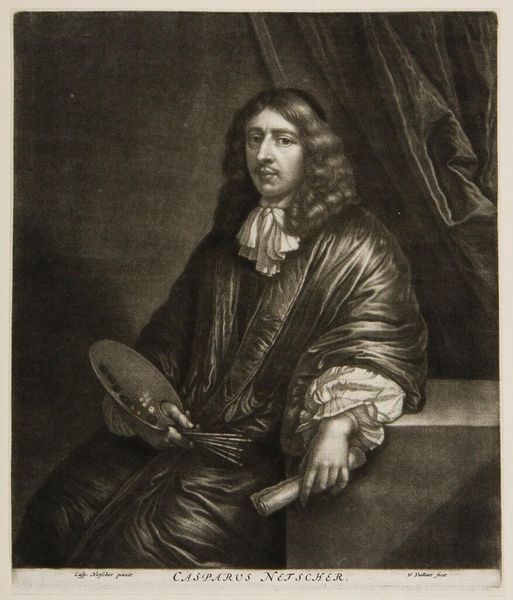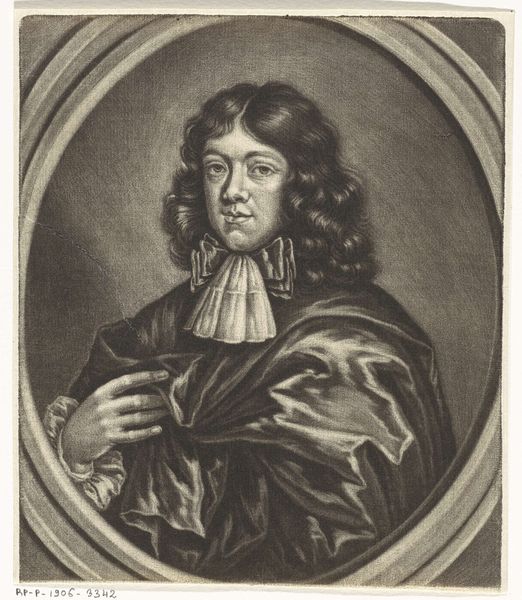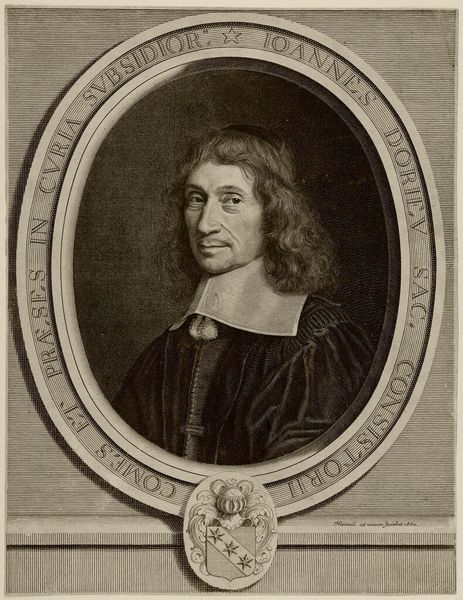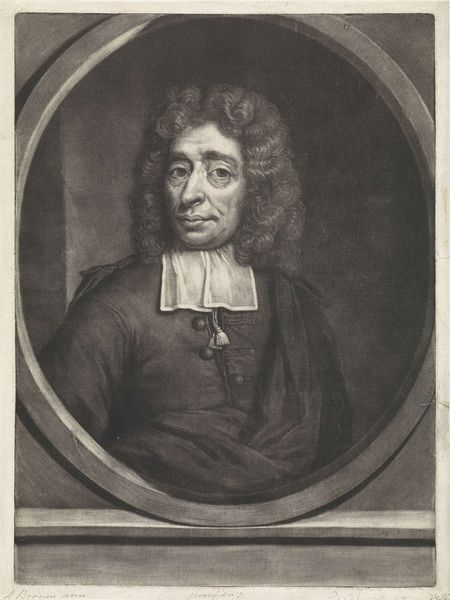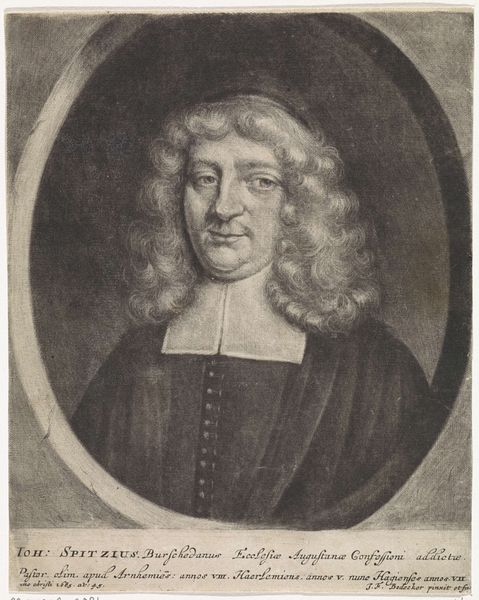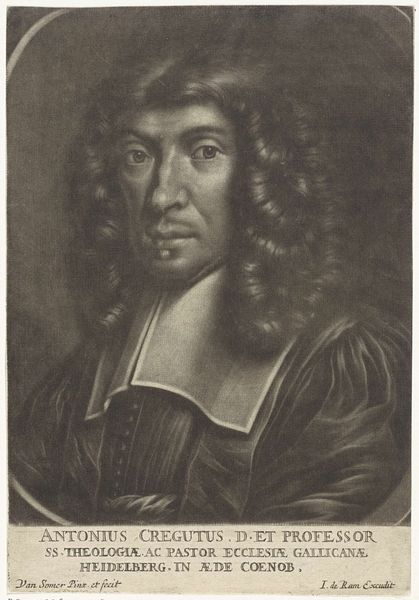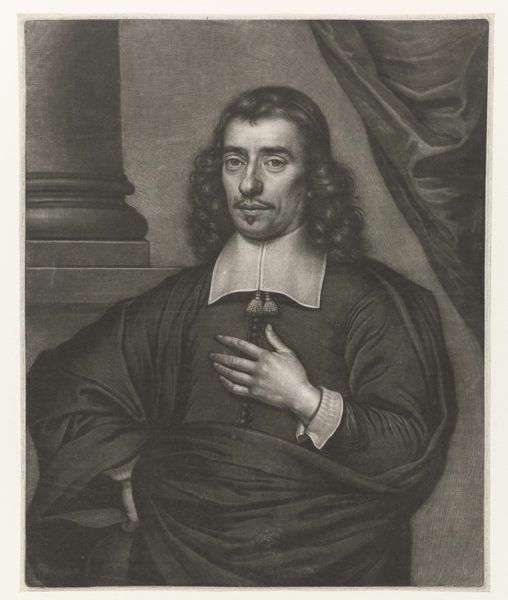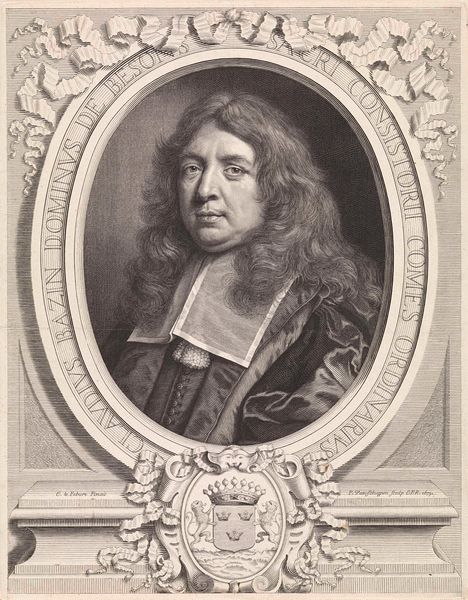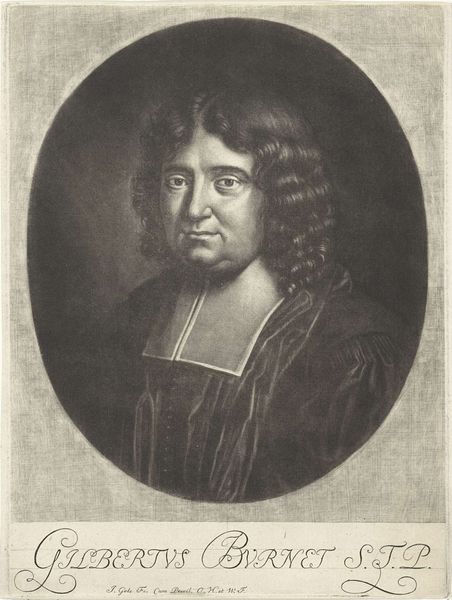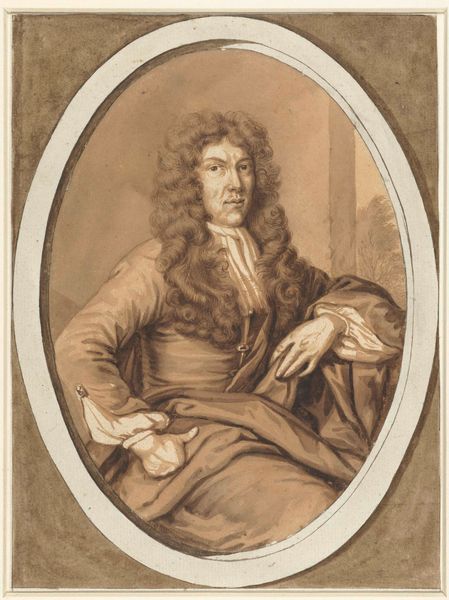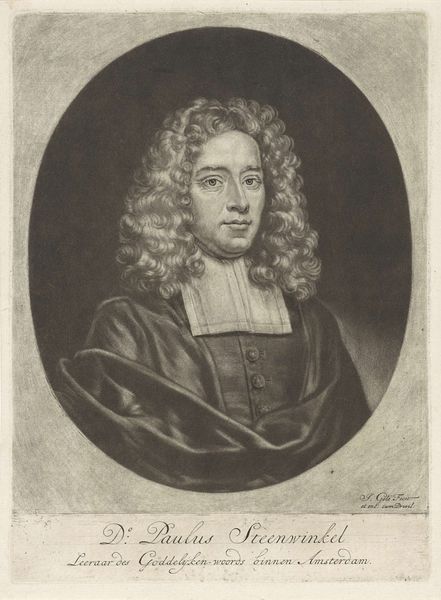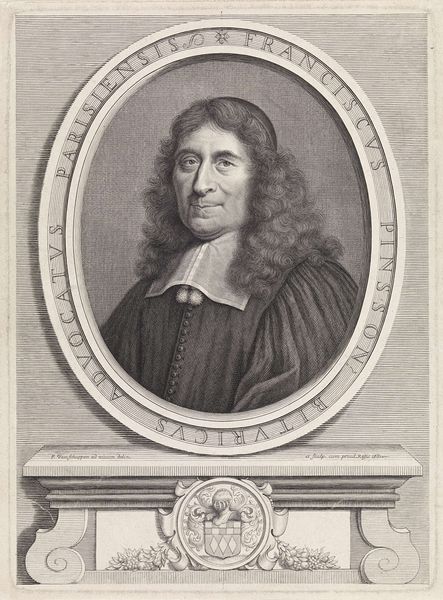
print, engraving
portrait
self-portrait
baroque
dutch-golden-age
engraving
Dimensions: height 290 mm, width 244 mm
Copyright: Rijks Museum: Open Domain
Curator: Wallerant Vaillant’s engraving after Caspar Netscher’s self-portrait, dating from around 1658-1677 and housed in the Rijksmuseum, is quite compelling, isn’t it? Editor: It is! The contrast between light and shadow gives it such a dramatic feel, and you immediately see all of the textures. What really grabs me is that, as a print, it allows the artist to make more of themselves. How does this work resonate with you? Curator: Thinking about the materials and the process, I'm interested in the transition from paint to print. Consider the labor involved in translating the original painted portrait to an engraving. Vaillant, as a skilled engraver, wasn't simply reproducing an image; he was re-interpreting it through a different medium, subject to its specific limitations and possibilities. It makes us consider the networks that supported these art objects: the paper makers, the engravers themselves and distributors all had to eat and work to make a living off this artistic labor. How does that tension play out between an artisan craft and high art? Editor: So, the act of reproducing Netscher's self-portrait transforms it, shifting the focus to the printmaker’s craft, and maybe democratizing the image a bit, right? Since prints were probably more accessible than original paintings. Curator: Exactly. The act of reproducing challenges our traditional ideas about artistic authorship, highlighting the essential contribution of skilled artisans such as Vaillant and inviting the viewer to contemplate the socioeconomic dynamics within the art world. To further probe our understanding, consider what type of client could afford it, where was the print sold and who did the production benefit? Editor: I hadn’t thought about it that way, it's fascinating how the social conditions of its creation and consumption are embedded in the artwork. It's less about Netscher and more about the wider network. Curator: Precisely! By understanding it materially, it really does shift the focus onto the socio-economic networks in the Dutch Golden Age. Editor: I’m definitely going to pay more attention to prints now. It’s about more than just the image; it's about the whole system that brings it to us.
Comments
No comments
Be the first to comment and join the conversation on the ultimate creative platform.
